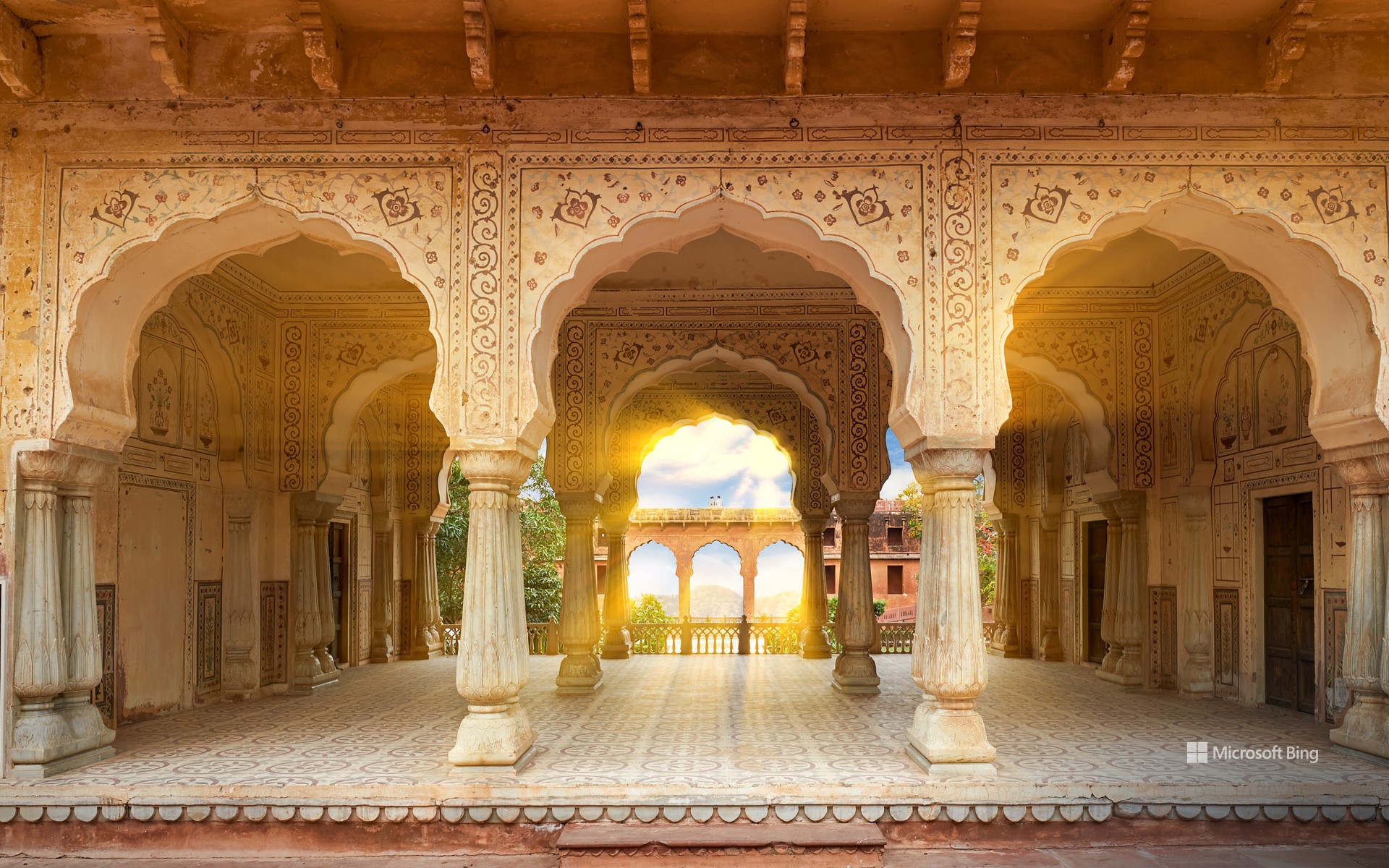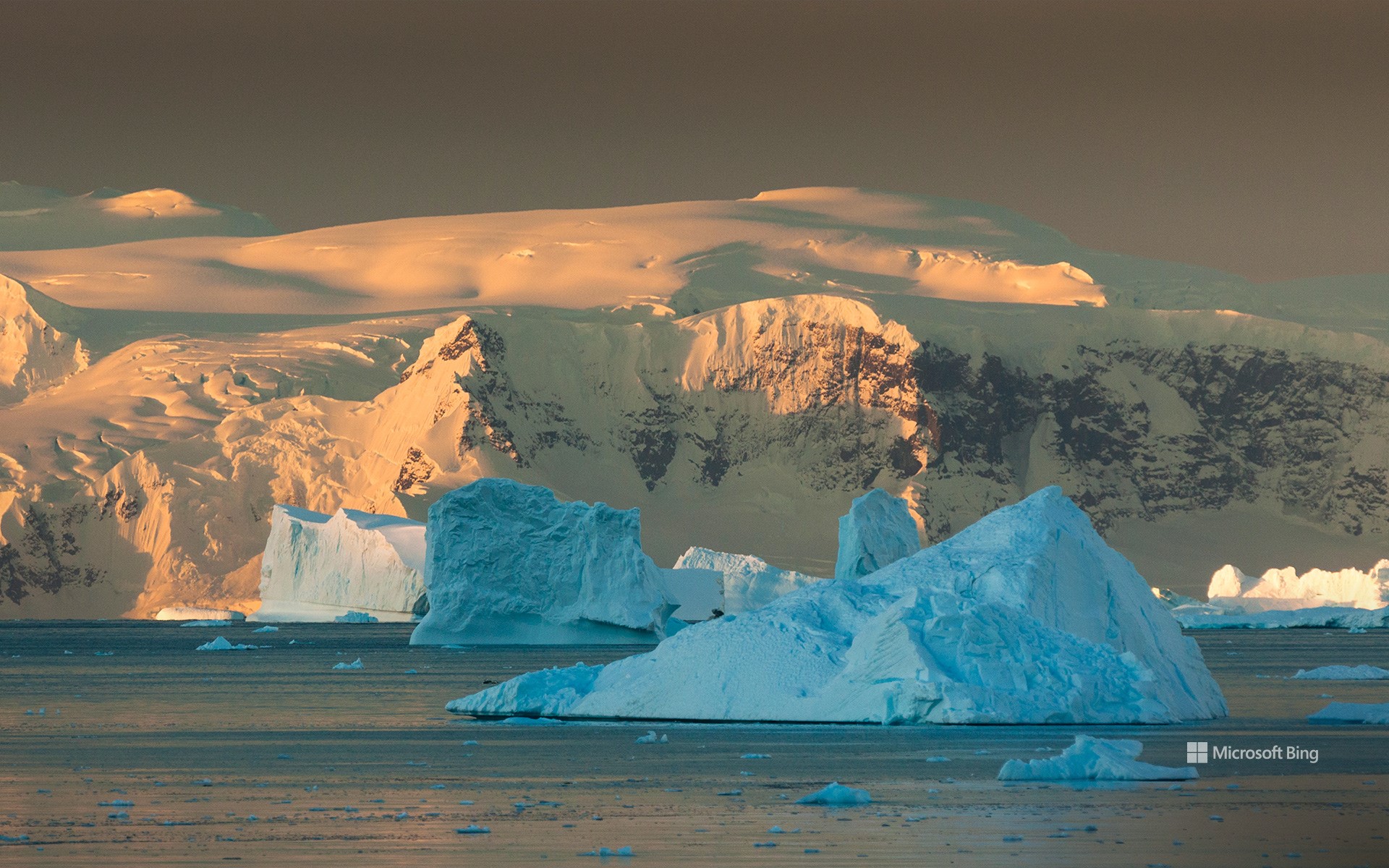Sattais Katcheri,琥珀堡,拉贾斯坦邦,印度 Sattais Katcheri (Court of 27 pillars), Amber Fort, Rajasthan, India (© Yury Taranik/Shutterstock)

Sattais Katcheri,琥珀堡,拉贾斯坦邦,印度 Sattais Katcheri (Court of 27 pillars), Amber Fort, Rajasthan, India (© Yury Taranik/Shutterstock)
柱式遗产 A pillared legacy
琥珀堡,安梅尔,斋浦尔,拉贾斯坦邦,印度
漫步在印度拉贾斯坦邦斋浦尔地区的街道上,你会被宏伟的宫殿和高耸的堡垒所吸引,它们塑造了该地区的景观。其中最引人注目的是琥珀堡,它坐落在距离斋浦尔主城约7英里的一座小山上。在这座堡垒华丽的城墙内有一个名为“Sattais Katcheri”的建筑,意思是“27根柱子的宫廷”,这就是今天图片中的建筑。琥珀堡建于1592年,曾是该地区统治者的居所。琥珀堡以其独特的印度神庙、拉杰普特和莫卧儿建筑风格而闻名,由淡黄色和粉红色砂岩以及白色大理石建成。这座杰作共分四层,每层都有自己的庭院。每晚的灯光音响秀将城堡的魅力展现得淋漓尽致。作为联合国教科文组织认定的世界遗产,琥珀堡可以让游客尽情探索其丰富的历史和皇家风范。
Amber Fort, Jaipur, Rajasthan, India
Grand palaces and towering forts shape the landscape of the Indian state of Rajasthan. Among the most prominent is Amber Fort, also known as Amer Fort or Amber Palace, which is perched on a small hill about 7 miles from the main city of Jaipur. Within its regal walls lies the Sattais Katcheri, which means 'court of 27 pillars,' featured in today's image. Amber Fort was built in 1592 and it served as the residence of the Maharajas, or rulers, of the area. Famous for its unique blend of Hindu, Rajput, and Mughal architectural styles, it is constructed from pale yellow and pink sandstone alongside white marble. This masterpiece is spread across four levels, each with its own courtyard. Part of the wider Hill Forts of Rajasthan UNESCO World Heritage Site, Amber Fort invites visitors to explore a rich blend of history and royalty.
南极洲的冰山 Icebergs, Antarctica (© Art Wolfe/DanitaDelimont.com)

南极洲的冰山 Icebergs, Antarctica (© Art Wolfe/DanitaDelimont.com)
保护最后一片大荒野 Protecting the last great wilderness
南极日
今天是南极日,让我们将目光聚焦在世界上最引人注目的国际协定之一的《南极条约》上。该条约于1959年由12个国家签署,将整个南极大陆指定为非军事区,特别注重促进科学研究与合作。这一天彰显了全球合作精神,提醒我们肩负起保护地球上最后一片大荒野的集体责任。
“南极洲”这个名字源于古希腊语“antarktikos”,意为北极的对面。公元前350年左右,希腊哲学家亚里士多德首次提到“南极地区”的概念。尽管提及时间很早,但直到19世纪,人类才真正看到南极洲。南极洲是地球上最寒冷、最干燥、风力最大的大陆,气温最低可达零下112华氏度。这里广袤的冰原和冰川蕴藏着全球约70%的淡水。正如图片所示的那样,南极洲的海面上遍布冰山,冰山在南大洋上漂流,随着时间的推移逐渐融化。诸如帝企鹅和阿德利企鹅等物种,以及海豹、螨虫、线虫和水熊虫等生物,都把这片冰冷的栖息地当成了它们的永久家园。
Antarctica Day
Today, Antarctica Day shines a spotlight on one of the world's most remarkable international agreements—the Antarctic Treaty. Signed in 1959 by 12 nations, this treaty designated the entire continent as a demilitarized zone, with a special focus on promoting scientific research and collaboration.. This day honors the spirit of global cooperation, reminding us of the collective responsibility to protect the planet's last great wilderness.
The name 'Antarctica' is derived from the ancient Greek word 'antarktikos,' meaning opposite the Arctic. The concept of an 'Antarctic region' was first mentioned by Greek philosopher Aristotle around 350 BCE but it wasn't discovered until the 19th century. It is the coldest, driest, and windiest of the Earth's continents, with temperatures plunging as low as -112 degrees Fahrenheit. Vast ice sheets and glaciers found here hold about 70% of the world's fresh water. The waters are dotted with icebergs, as seen in today's image, which drift across the Southern Ocean and melt over time. Species like emperor and Adélie penguins, along with seals, mites, roundworms, and microscopic eight-legged moss piglets, call this icy habitat home.